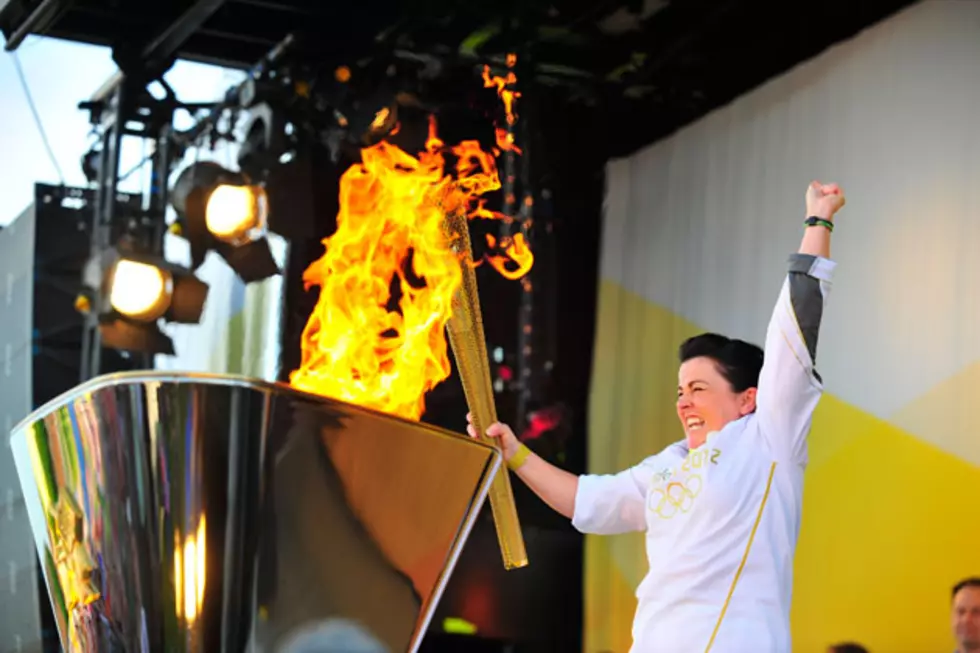
The 10 Most Breathtaking Opening Ceremonies in Olympic History
As the athletes get ready for the London Olympics, organizers are also preparing their best theatrics for the opening ceremony.
Director Danny Boyle is in charge of this year’s proceedings, and so far they’ve kept the whole show under wraps (we do know it’s being called Isles of Wonder, based on Shakespeare’s The Tempest). Back in December, Prime Minister David Cameron doubled the budget for the opening ceremony, and a reported 12,000 “dancers, drummers, skateboarders, acrobats and lookalikes for British historical figures” have been cast for the show.
Everything will be revealed on Friday, July 27.
Here’s a look back at some of the best opening ceremony productions to date:
2008
Beiling set a new standard with 14,000 participants working for as long as a year beforehand to get the show together. Everyone around the world was supremely impressed with the fireworks and flying they witnessed. “For four sweaty hours, the Olympics literally levitated in the thick Beijing air,” said one recap. Both choreography and technology were on display. It wasn’t without controversy, though: a giant firework “footprint” was revealed to have been faked.
2004
The Olympics went home again — to Athens. It took 400 drums beating at once to rally everyone together and take heed of the historical significance that this host city evoked. Most notable was the “sea of life” attraction that required 571,100 gallons of water and served as inspiration for everything that came after. Bjork regaled onlookers with a performance of her original song ‘Oceania.’ The Greek gods surrounded the proceedings. “Olympic Games! Welcome home!” bellowed the president of the organizing committee at the close of the evening.
2000
With a reported budget of $50 million, the opening ceremony focused on “Aboriginal culture, the Australian landscape and the country’s rural traditions,” according to one report. It had its fair share of technology, props, and special effects, with two dozen choreographers, artistic directors, and designers running the show on 3.3 million watts of power. Dancers were joined by acrobats, firebreathers, horsemen, and a marching band drawn from 20 different countries. Through it all, it was a 13-year-old girl’s rendition of ‘Under the Southern Skies‘ that wowed critics.
1996
The Summer Games will always be remembered for the Centennial Park bombing and Muhammad Ali’s lighting of the Olympic cauldron. America wanted to put its Southern best on display in Atlanta and that started with the music of Gladys Knight and the Atlanta Symphony Orchestra, among others, and a tribute to the Rev. Dr. Martin Luther King Jr. While the ceremony may have done away with some of the grand theatrics of past years, it resonated with most Americans as a classy way to showcase some of our best and closest to heart.
1992
Barcelona is best remembered for two things: the Dream Team’s dominance and the opening ceremony’s archer. A record 169 nations competed there, and the excitement was tangible. Paralympic archer Antonio Rebollo shot a flaming arrow across the stadium to light up the night, a spectacle that was highlighted by the “mythical birth of Barcelona from the sea, complete with ocean battles between sea monsters and humans,” according to reports. Some of opera’s biggest stars, Placido Domingo and Jose Carerras, charmed the crowd.
1984
The Los Angeles Games called on 12,000 people to take hold of 100 pianos, pigeons, balloons and more. Most memorable was the rocket-pack-wearing Bill Suitor, who flew into the Coliseum stadium to the amazement of the audience. At a time when the world seemed a bit shaky due to the threat of Communism, the ceremony helped us recall greatness and beauty. “Whatever ailed the world that gorgeous Saturday afternoon seemed to be instantly healed by the breathtaking sight and sound of 84 pianists playing ‘Rhapsody in Blue’ in the glistening Coliseum peristyle,” one columnist recalled.
1980
Three Army parachutists dropped from the sky to kick off the Moscow festivities. Later on, hot air balloons floated in to recognize the many nations in attendance and accounted for at a time marred by turmoil and protest. Because of the cold climate, everyone was covered up in ski hats and parkas, and with the colorful flags and balloons among them, the attendees adding even more color to the palette as they scattered after the closing of the ceremony.
1968
You couldn’t help but be touched by the Mexico City opening. The Games featured nearly 8,000 competitors from over 100 nations, both records at the time. But the greatest achievement was the lighting of the cauldron by 20-year-old Norma Enriqueta Basilio, the first woman to get the honor. If only her ancient Greek counterparts could have seen her step up and make history. Basilio was widely considered one of the top athletes of her time, and she’s remained an ambassador for the Games many decades afterward.
1948
The Games had been canceled since 1936 due to World War Two and everyone was thrilled to have them back in London. King George VI opened the event by addressing the nearly 6,000 athletes from 59 countries, and a 21-gun salute followed. When the Olympic torch finally made its way in the hands of John Mark, the crowd cheered loudly and some athletes “broke rank” to get a better view of the runner. At a moment as emotional as that, everyone was touched deeply.
1936
The Berlin Games were the first with the pageantry we now heavily associate with the festivity. It marked the first time that the Olympic torch relay fro Athens to Germany took place. For Nazi Germany, the Olympics gave them an opportunity to showcase their dominance. The crowd was unimpressed by Hitler at the opening ceremony, as he showed up in a Mercedes with guardsmen following close behind. When a bicycle rider appeared shortly after the Olympic torch went by, the audience applauded. “He was, for a moment, a popular idol without apparently knowing it or imaging why,” the New York Times reported.
More From 107.9 Jack FM


![Denver International Airport Celebrates Olympic Athletes Arrival [VIDEO]](http://townsquare.media/site/98/files/2018/02/olympicspollRonald-MartinezGetty-Images.jpg?w=980&q=75)

![Which Winter Olympic Sport is Wyoming’s Favorite? [POLL]](http://townsquare.media/site/102/files/2014/02/474445017.jpg?w=980&q=75)




